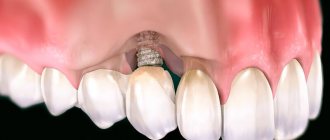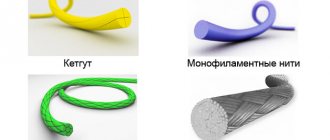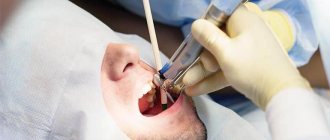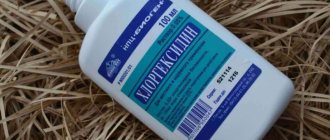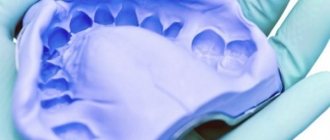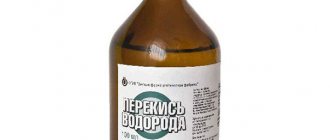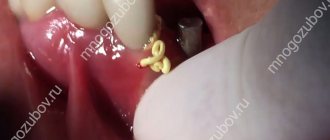How to gargle correctly?
The drug Chlorhexidine has anti-inflammatory, antimicrobial and analgesic properties. It is indicated for the following inflammatory diseases:
- acute and chronic tonsillitis,
- pharyngitis,
- laryngitis,
- ARVI,
- condition after tooth extraction,
- gingivitis,
- stomatitis,
- flux,
- disinfection of removable dentures.
Can I rinse my mouth with Chlorhexidine ? Yes, you can. Despite the fact that the manipulation is easy, you must follow the recommendations:
- Rinse your throat with warm water before starting the procedure.
- Take 15 ml of the resulting solution into your mouth. To do this, measure the volume with a special measuring spoon.
- Tilt your head back a little and rinse for a minute.
- When finished, spit out the liquid.
- Do the procedure three times.
Do not prolong the duration of the procedure yourself. Eating should be postponed for a couple of hours after rinsing. This way the medicine will show its qualities as much as possible on the affected areas. Therapy is carried out 2 times a day for minimal pain, 3 times for intense pain. After the procedure, the throat should be at rest. The product shows its qualities better at a temperature of 22-40 degrees. Treatment time is 5-14 days. The duration of therapy depends on the severity of the disease and the age of the patient. Do you rinse your mouth with Chlorhexidine ? Yes, it is indicated for use in combination with complex treatment. When used correctly, it effectively demonstrates its qualities.
how to use chlorhexidine
Mouthwashes for hypersensitive teeth
- ELMEX “Sensitive Plus. One of the highest quality rinses for hypersensitive teeth, allowing you to solve the problem in the shortest possible time. In addition to amino fluoride, the solution contains a polymer that forms a protective film on the surface of the enamel.
- LACALUT (Lakalut) "Sensitive". German quality product with a good composition. Chlorhexidine and aluminum lacatate reduce bleeding gums, but a course of use lasting more than 3 weeks is not recommended.
A few words about the drug
Chlorhexidine is a safe and proven mouth and throat rinse for children and adults. It is prescribed for ENT diseases to eliminate inflammation in the oral cavity, which forms under the influence of an infectious agent. The drug has the following qualities:
- absorbs the proliferation of pathogenic microflora of various types, but does not affect the beneficial microbes of the body,
- reduces pathological manifestations and eliminates pathogenic microflora from mucous membranes,
- accelerates the recovery of injured soft tissues,
- removes plaque from teeth.
Is it possible to gargle with Chlorhexidine ? Yes, you can. It has a wide range of applications, depending on the concentration of the active component:
- 0.05% - used to treat gums, throat, and oral mucosa.
- 0.5% - used to treat damaged areas, burns, and to disinfect medical instruments.
- 1% - for treating the surgeon's hands.
- 5% - used to create products on a water or glycerin base.
Many people wonder whether Chlorhexidine is hydrogen peroxide or not? These drugs belong to the same group of antiseptics, but hydrogen peroxide contains another active component.
Dosage forms
The active component is added to some gum treatment products, popular among which are rinses, with a chlorhexidine concentration of 0.2%. They are used in combination with medications that contain anti-inflammatory components.
Chlorhexidine has no analogues. At the moment, solutions of various concentrations are produced under their own name. There is a so-called indirect analogue in the form of a spray - the antiseptic Miramistin at a higher cost. However, its composition is different, although the action is similar.
Below we will consider other dosage forms.
Toothpaste with chlorhexidine for gums
In preventive concentrations added to toothpastes, the active substance protects the gums from periodontal disease. Preventing weakening of teeth and bleeding gums.
This paste cannot be used for a long time; the antiseptic in the composition tends to darken the enamel of the teeth.
Gel with chlorhexidine
The gel is applied directly to the gums where there is inflammation. Apply with your fingers, rub in gently in a circular motion, immediately after oral hygiene procedures, twice a day (in the morning and before going to bed). Apply to healthy gums without rubbing. The gel is left for 10 minutes. Afterwards you should not drink for 60 minutes. For alveolitis, gum inflammation of various types and other diseases, the course of use is 10 days.
It is important to note that gels with chlorhexidine have a high concentration of the active substance - from 0.12%. The gel contains additional substances, for example, extracts of medicinal plants. To enhance the antiseptic effect, cetylpyridinium chloride is added.
Use for sore throat and tonsillitis
How to gargle with Chlorhexidine for inflammation ? The disease requires an integrated approach: the doctor prescribes an antimicrobial agent and a local preparation for irrigation. The manipulation eliminates plaque of pus on the tonsils and kills harmful microbes. At the time of the procedure, the main thing is to use the product at room temperature. This is the only way it will remove the painful condition and discomfort in the throat.
use of chlorhexidine for sore throat
If you have a sore throat, then your throat needs to be irrigated 2 times in a row. After you rinse your mouth with warm water to get rid of the remaining food, you need to take a tablespoon of Chlorhexidine, then perform the manipulation for 30 seconds and spit out the liquid. At the time of the first irrigation, plaque of pus is removed. After some time, the manipulation must be repeated so that a protective layer is formed on the tonsil. This will help prevent the occurrence of a purulent process. When the medical picture is complete, you need to gargle with Chlorhexidine for a sore throat every 3 hours. As soon as your throat feels better, the manipulation should be performed 3 times a day. Afterwards, do not eat food for an hour. You can also gargle with Chlorhexidine for gum inflammation
Composition of Chlorhexidine
The composition of the drug is 0.05% solution
Chlorhexidine bigluconate includes 0.5 mg
of chlorhexidine bigluconate
, additional substances.
The composition of the drug is 20% solution
Chlorhexidine Bigluconate includes 0.2 g of active substance, additional substances.
Release form
INN: Chlorhexidine
The form of release of the product is as follows. The drug is available in the form of a 0.05% solution for external use. In a polymer bottle with a nozzle, as well as in glass bottles of 100 ml, 1 bottle in a cardboard package.
A 20% solution of the drug is sold in polymer bottles with a cap, 100 ml, 500 ml.
Suppositories and gel are also produced (it contains lidocaine
), cream, ointment, spray with a similar active ingredient.
pharmachologic effect
An aqueous solution of Chlorhexidine Bigluconate has a local antiseptic effect, predominantly bactericidal. The product is a dichlorine-containing biguanide
. It affects the body by changing the properties of the cell membrane of microorganisms. The cations that are formed due to the dissociation of chlorhexidine salts react with the bacterial membranes, which have a negative charge. The effect of the drug promotes the destruction of the cytoplasmic membrane of the bacterium. Its balance is disrupted, and the bacterium eventually dies.
Chlorhexidine Bigluconate solution 0.05%, gluconate 20% effectively destroys a number of strains of microorganisms. This is Neisseria gonorrhoeae
,
Trichomonas vaginalis
,
Bacteroides fragilis
,
Chlamidia spp
.,
Gardnerella vaginalis
,
Treponema pallidum
.
The drug is also active against Ureaplasma spp
., and also has a moderate active effect against individual strains of
Proteus spp.
and
Pseudomonas spp
.
Viruses demonstrate resistance to the drug (with the exception of the herpes
), fungal spores.
If a rinse with Chlorhexidinum is used to wash hands, or the skin is treated with the drug, Chlorhexidine Bigluconate has a long-term antibacterial effect. Therefore, the drug can be used to treat the surgeon’s hands and the surgical field.
The product retains its antimicrobial activity in the presence of pus, blood, etc., but a decrease in its effectiveness is noted.
Pharmacodynamics and pharmacokinetics
When applied topically, Chlorhexidine is not absorbed into the bloodstream and has no systemic effect.
Indications for use
What the antiseptic is used for can be found in the detailed instructions for the drug. It is widely used to treat diseases that are caused by microorganisms sensitive to the influence of Chlorhexidine, and for their prevention.
The medicine is used to treat certain diseases depending on the concentration of the solution.
A solution of 0.05%, 0.1% and 0.2% is widely used to prevent infectious diseases after surgical interventions. The use of such solutions in dentistry is practiced in order to process dentures. Dentists determine how to use Chlorhexidine in dentistry during various procedures, and also use it for stomatitis.
,
periodontitis
for rinsing gums.
Skin treatment is practiced in urology (if penetration into the urethra, etc.), surgery, and gynecology before and after surgery to prevent infection. The use of the product in gynecology is practiced for the purpose of disinfecting mucous membranes and skin before carrying out a series of manipulations. How to use the solution depends on the type of procedure or manipulation.
In gynecology, Chlorhexidine is also used for thrush. To get rid of thrush, a woman is recommended to douche according to a special scheme.
Chlorhexidine is used in the treatment of many dermatological diseases of both bacterial and fungal origin. The use of the drug is also indicated in the presence of purulent wounds, diseases of the mucous membranes provoked by microorganisms sensitive to the active substance of the drug.
What Chlorhexidine is is known to those who have been seriously injured. The product is often used to treat wounds and damaged skin to prevent infection. What it is, and whether it is worth using the product in a particular case, is determined by the doctor.
Chlorhexidine Bigluconate solution is used to prevent sexually transmitted diseases - genital herpes
,
chlamydia
,
trichomoniasis
,
syphilis
,
gonorrhea
.
Chlorhexidine Bigluconate solution 0.5%
used to treat damage to mucous membranes and skin, as well as for the treatment of medical instruments (the solution temperature should be 70 degrees Celsius).
Chlorhexidine Bigluconate solution 1%
used to prevent infection of burns and wounds, for disinfection before operations, as well as for treating instruments and devices that cannot be subjected to heat treatment.
Chlorhexidine Bigluconate solution 5% and 20%
used in the preparation of solutions based on water, glycerin or alcohol.
Contraindications
The following contraindications to the use of this product are noted:
· High sensitivity to the components of the product.
· Not used to treat patients suffering from dermatitis
.
· Do not use at the same time with other antiseptics (this is hydrogen peroxide
and etc.).
· It is not advisable to use it for disinfection of the surgical field before surgery or after interventions on the central nervous system and auditory canal.
· Not used in ophthalmology (the answer to the question whether it is possible to wash the eyes with this product is negative, since in ophthalmology only a specially prepared solution is used).
· For the treatment of children, use with caution.
Side effects
When using Chlorhexidine Bigluconate during treatment, the following side effects were observed in some patients:
· dry skin;
· itchy skin
;
· appearance of a rash;
· dermatitis
;
· photosensitivity.
With prolonged use of mouth rinses and mouthwashes, taste sensations may change and tartar
, there is a change in the color of the teeth.
Instructions for use Chlorhexidine Bigluconate (Method and dosage)
The instructions for Chlorhexidine stipulate that aqueous and alcoholic solutions of Chlorhexidine are used for the local treatment of infectious diseases.
Instructions for use of Chlorhexidine Bigluconate for the prevention of sexually transmitted diseases are as follows. A 0.05% solution is used no more than two hours after unprotected sexual intercourse. For men, 2-3 ml of the product is injected into the urinary canal, for women, 1-2 ml is injected into the urinary canal and another 5-10 ml into the vagina (like douching in gynecology). It is also advisable to treat the skin near the genitals with the solution. The instructions on how to use the drug in this case contain a warning that urination should be done no earlier than 2 hours after using the drug. Otherwise, the effectiveness of the action decreases.
For prevention in this case, suppositories with Chlorhexidine Bigluconate can also be used.
How to do Chlorhexidine douching for thrush
and other gynecological diseases, and whether it is possible to douche when certain symptoms appear, you should definitely check with your gynecologist first. For douching, a ready-made solution of 0.05% is used, which does not require additional dilution. Before douching, you need to lie down horizontally and, after squeezing a few drops of the product from the bottle into the vagina, lie down for a few minutes. If allergic reactions develop, such procedures should not be performed.
The method of using Chlorhexidine for inflammatory diseases of the urinary tract is as follows: 2-3 ml of 0.05% is injected into the urinary canal once or twice a day. The course of treatment lasts 10 days. This method of application is practiced in men and women.
To treat burns, wounds and other skin injuries, a solution of the drug 0.05%, 0.02% or 0.5% is used. It is used for irrigation or applications. The application is left for a period of 1 to 3 minutes. A spray with a similar active ingredient can also be used.
If it is necessary to disinfect the skin before surgery, use a 20% solution of Chlorhexidine digluconate, which is diluted with 70% ethyl alcohol (1 part of a 20% solution of Chlorhexidine digluconate and 40 parts of 70% alcohol). The surgical field is treated twice with an interval of 2 minutes.
In ENT practice, Chlorhexidine is used for sore throat
,
pharyngitis
,
tonsillitis
. If you have a sore throat, you should gargle with a solution of 0.2% or 0.5%.
Before using Chlorhexidine gargle
, it is recommended to rinse your mouth thoroughly with warm water. Next, gargling for a sore throat is carried out as follows: you should take 10–15 ml (about a tablespoon) of the solution, which can be used to gargle for about 30 seconds. You can repeat these steps one more time. After rinsing, it is advisable not to take food or liquid for 1 hour. The doctor will tell you how to gargle with Chlorhexidine, as well as how many times a day you need to perform this procedure for the throat, taking into account the patient’s individual symptoms. You should also ask the specialist whether it is possible to gargle with Chlorhexidine if the patient notices side effects.
It should be noted that if rinsing your mouth with Chlorhexidine causes a burning sensation, then most likely the solution is too concentrated. The highest permissible concentration is no more than 0.5%. You must first study the instructions on how to dilute the medicine for mouth rinsing. After teeth extraction, rinse your mouth three times a day for 1 minute. Is it possible to rinse your mouth more often and how to rinse your mouth if complications are noted after tooth extraction, you need to find out from a specialist.
Chlorhexidine solution should not be swallowed while rinsing; if the solution accidentally gets into the stomach, you need to drink activated carbon tablets (1 tablet per 10 kg of person’s weight).
Nasal rinsing for sinusitis
This drug should not be practiced on its own. Whether it is possible to rinse the nose is determined solely by the doctor. A solution taken into the nose can enter the cavity of the inner ear or onto the lining of the brain, which is fraught with the development of serious complications.
Overdose
According to the instructions, an overdose of the drug is impossible. If the drug is swallowed, gastric lavage
, use of
activated carbon
, symptomatic treatment.
Interaction
If the pH of the medium exceeds 8, a precipitate forms. If hard water was used when preparing the solution, its bactericidal effect is reduced.
Does not combine with anionic compounds, in particular soap.
Does not mix with chlorides
,
carbonates
,
phosphates
,
sulfates, borates
,
citrates
.
of neomycin increases
,
kanamycin
,
chloramphenicol
,
cephalosporin
.
Ethyl alcohol enhances the bactericidal effect.
Terms of sale
Sold in pharmacies without a doctor's prescription.
Storage conditions
The drug should be stored in a dark, dry place, storage temperature - from 1 to 25 degrees Celsius.
Best before date
Solution 0.05%
can be stored for 2 years.
Solution 20%
can be stored for 3 years.
Prepared solutions can be stored for 1 week.
special instructions
The solution remains active in the presence of blood and organic substances. Contact of the drug with the eyes, membranes of the brain and the auditory nerve should be prevented.
In people with open TBI
, damaged spinal cord,
perforation of the eardrum,
it is necessary to avoid getting the product on the surface of the brain, meninges, and also into the tympanic cavity.
If the drug gets into your eyes, rinse them immediately.
It is not recommended to mix with other detergents and disinfectants.
If clothing has been in contact with the product, do not expose it to hypochlorites.
, producing active chlorine.
Analogs
Analogs of Chlorhexidine Bigluconate are drugs that contain a similar active substance. Analogues are available in the form of different dosage forms - gels, solutions, ointments, suppositories. This is Hexicon
,
Hexicon D
(for children),
Hibiscrub
,
Amident
, etc.
Other antiseptics, such as iodine or hydrogen peroxide, can also be used.
Which is better: Chlorhexidine or Miramistin
?
Many people are convinced that Miramistin
and Chlorhexidine are the same thing. In fact, these drugs do belong to the same class of antiseptics. What is the difference between Chlorhexidine and Miramistin is in the active substances contained in the preparations. Miramistin is not a complete analogue of Chlorhexidine. It has a pronounced antifungal and antiviral effect. Therefore, there are some differences in the indications for use of this drug. Miramistin is not contraindicated for people suffering from dermatitis.
Synonyms
Hexicon.
For children
For the treatment of children, the drug is used with caution and only after a doctor’s prescription.
During pregnancy and lactation
Chlorhexidine can be used topically during pregnancy and breastfeeding. However, despite the fact that pregnancy is not a contraindication to the use of the drug, prolonged use of the solution is not recommended.
Gargling during pregnancy is possible only under the supervision of a doctor.
How to use Chlorhexidine for ARVI?
If there is an acute respiratory viral infection, then inflammation accumulates in the nasal cavity. First, you need to rinse your mouth with plain water to get rid of food debris. Then pour the product into a measuring cup and gargle with it. The interval between manipulation and eating should be 1.5 hours. Adults carry out the procedure up to 6 times a day for a week. Instead of irrigation, it is better to spray an antiseptic. There is no need to gargle if there are complications of ARVI such as otitis media, sinusitis. If the product penetrates into the paranasal sinus or the Eustachian tube, deterioration may occur. There is no need to rinse the nasal passages if you have a cold, as the remedy will be ineffective. Bleeding from the nose may occur as the mucous membrane becomes dry. Soreness, discomfort and pain go away in stages as the infection is eliminated. The drug does not work instantly. There is no need to expect instant action from him. We told you how to gargle with Chlorhexidine after eating.
Mouthwashes for caries prevention: which one to choose?
- Elmex (Elmex). According to most dentists, this product is the best. It contains amino fluoride, the most effective fluoride compound, which forms a thin film on the teeth, thanks to which fluoride continues to penetrate into the tissues even after using the product. Elmex does not contain alcohol or any antibiotics that provoke the development of dysbacteriosis. The mouthwash can be used continuously from the age of 6 years. The average price of a 400-ml bottle is about 230 rubles.
- PRESIDENT (President) "Classic Plus". A quality Italian product with sodium fluoride and herbal ingredients. In addition to strengthening the enamel, the mouthwash freshens breath. It is slightly inferior to Elmex in terms of effectiveness, and it costs more: 250 ml. solution will cost 210 rubles.
Use for pharyngitis and laryngitis
Complete treatment consists of taking antibiotics, drugs aimed at improving sputum waste, and antiseptics for local disinfection of the injured organ. To perform the manipulation, you need to take 1 tablespoon of 0.05 Chlorhexidine solution. Take the liquid into your mouth and rinse it for 30 seconds. Then wait and repeat the action. The drug coats the tonsils, protecting them from bacterial growth. In case of severe inflammation, manipulations should be done every 3-4 hours. The longer the active substances are present on the surface of the inflamed area, the faster the patient recovers.
In addition to rinsing, you should not talk for a week and not eat hot, cold, or spicy foods that irritate the mucous membranes. For pharyngitis, therapy is supplemented with inhaled Chlorhexidine. To do this, take 15 ml of a 0.05 solution, which is immersed in a nebulizer.
Where do bacteria come from in the mouth and how to fight them?
Whatever the type of stomatitis (and there are quite a few varieties of it - aphthous, allergic, herpetic, ulcerative), it is always accompanied by the active proliferation of bacteria or viruses on the mucous membrane. Do you think they come from outside, from dirty hands and unwashed fruit? But it turns out that even an absolutely healthy person’s mouth is always full of spirochetes, fungi, staphylococci, streptococci and other “cocci.” These cultures constantly interact and restrain the excessive development of one of their friendly company. This balance is also maintained by saliva, which allows the microflora to exist more or less normally, but not to multiply too actively. This is the normal microflora of the oral cavity, the task of which is to destroy “foreign” bacteria that enter the mouth from the outside.
And then overnight the balance of microorganisms is disrupted. There are too many of some, too few of others. This is stomatitis. It is not difficult to destroy harmony. This can be caused by many factors and is not always due to dirty hands or unwashed food. Inflammation of the mucous membrane can occur due to:
- colds;
- stress;
- injuries;
- taking antibiotics;
- hormonal surge;
- dehydration of the body, and, consequently, a significant decrease in the amount of saliva.
The presence of hard-to-reach places in the mouth that are difficult to penetrate with a toothbrush also significantly increases the risk of developing stomatitis. Carious cavities, gum pockets, leaky crowns - all these are ideal conditions for bacteria. You can’t get them there, so they begin to multiply beyond measure. The more tartar and plaque in your mouth, the higher the likelihood that you will sooner or later face the need to treat painful ulcers.
Precisely because with stomatitis you have to “tame” overly active bacteria, one of the mandatory components of treatment is an antiseptic. It doesn't have to be chlorhexidine. But since it is the most accessible and cheap, most often patients prefer to rinse their mouths with it. The essence of its action is simple: it penetrates inside the bacterial cell and prevents it from consuming oxygen, which naturally causes it to die immediately.
How to use Chlorhexidine during pregnancy and breastfeeding?
How to rinse your mouth with Chlorhexidine after tooth extraction ?
During the period of bearing a child and breastfeeding, it is necessary to use the drug with caution and only with the permission of a doctor, despite the fact that it is not absorbed into the bloodstream. The product does not have a negative effect on children. The active component is effective only on the surface of the mucosa. It does not enter the blood circulation by more than 1%. Therefore, the drug is completely safe for a pregnant woman and fetus, as well as a baby who is breastfeeding. If the doctor prescribes Chlorhexidine, then the throat should be irrigated during pregnancy and breastfeeding according to a similar scheme as for adult patients. Treatment time is 7-14 days. The only point is that a pregnant woman needs to be careful at the time of manipulation. You should not swallow a lot of medicine to avoid side effects. If it is impossible to take the drug, the doctor prescribes analogues - Miramistin, Furacilin.
Composition and effects
The active effect, according to the instructions for chlorhexidine for rinsing gums, is due to its ability to destroy the integrity of the cell membranes of pathogenic microorganisms, therefore, as a result of exposure to chlorhexidine, they die. The medicine belongs to the group of antiseptics. Repeated studies by scientists have proven that the drug is active on the surface of various wounds, even those where purulent discharge is present. Prevents the development of complications of diseases such as gingivitis and periodontitis. For rinsing and irrigation, chlorhexidine is available in solution form.
What contraindications are there for taking it?
Like any medicinal drug, Chlorhexidine has some restrictions on its use. If you decide to rinse your mouth with Chlorhexidine for gum inflammation, the instructions should be at hand. The drug should not be taken under the following conditions:
- personal intolerance to the substances of the drug,
- the child's age is less than 7 years,
- simultaneous use of other irrigation agents, for example, hydrogen peroxide.
If the patient follows all the recommendations and knows how to rinse the mouth with Chlorhexidine , then he does not experience side effects. Regular irrigation can cause unpleasant conditions:
- tooth enamel or dentures have changed color,
- premature formation of dental calculus,
- deformation of taste qualities,
- creating a yellow coating on the tongue,
- allergies in the form of itchy skin on the tongue and urticaria.
If the patient swallows an antiseptic, you need to thoroughly rinse the stomach and drink charcoal. You should talk to your doctor before your appointment. He will tell you which Chlorhexidine to gargle with and how to do it.
can chlorhexidine be used
Strengths and weaknesses of the drug
What are the advantages of the drug:
- The affordable price makes the drug accessible to any patient.
- Effectively destroys many types of bacteria.
- Keeps active.
- Eliminates bad breath.
- Can be used during pregnancy.
- Minimum range of contraindications.
Flaws:
- Specific taste.
- Weak effectiveness in the fight against herpes.
- Over long periods of use, the tongue and teeth will darken slightly.
Experts mostly leave positive reviews about the drug. Chlorhexidine is often prescribed for prophylactic purposes. If you follow your doctor's recommendations, you can achieve the desired effect.
How to properly dilute Chlorhexidine for an adult?
Different concentrations of the antiseptic impose restrictions on the areas of its use. To gargle, use a 0.05% solution. This type of release is sold in the pharmacy in a ready-made version in special plastic containers with a dispenser. They are comfortable for treating the affected throat. If the antiseptic has a large dose of the active ingredient, then at home you can dilute the solution to the required percentage. To do this, take chilled warm or distilled water. For an adult you need to dilute in the following order:
- 0.2% solution - 1k4,
- 0.5% remedy - 1k10,
- 1% - 1k20,
- 5% - 1k100.
If the drug is not diluted, it can cause burns to the mucous membranes. But 0.05% antiseptic does not require dilution with water. The product is ready for use. Otherwise, there will be a decrease in the productivity of the drug. You can heat the product in a water bath until warm.
Chlorhexidine for rinsing gums: instructions for use and method of preparing the solution
Ready-to-use formulations containing chlorhexidine can be purchased at your local pharmacy. This form is the simplest and most convenient. These solutions are already diluted taking into account all norms and requirements. This solution of chlorhexidine for rinsing the gums according to the instructions is used one tbsp. l. for treating the oral mucosa. The purchased 0.20% solution will need to be diluted before rinsing your mouth with it. You need to take two and a half milliliters of the medicine and dissolve it in boiled water. When the solution is ready, you can begin the procedure. If an unpleasant burning or itching sensation appears, you can add a small amount of water.
Is it necessary to treat the throat with Chlorhexidine?
Chlorhexidine is a powerful antiseptic that kills germs, viruses, and fungi. It has a minimum number of contraindications and is used by all persons, pregnant women and children. It is imperative to follow simple rules for taking an antiseptic:
- Do not swallow the solution. Otherwise, you will need to do gastric lavage and drink absorbents.
- Many people are interested in how long you can rinse your mouth with Chlorhexidine ? Do not rinse the solution for a long time or exceed the concentration and dosage of the antiseptic.
- You cannot use the product for more than 15 days.
- If the drug gets into your eyes, rinse them with warm water. To reduce irritation of the conjunctiva, apply special drops to your eyes.
- The product must be kept away from UV radiation.
- The effect of the drug is reduced if used together with products that contain iodine.
- If the drug contains a high concentration, you can dilute it yourself to a concentration of 0.05%. For the antiseptic to be most effective, warm it up.
We answered the question whether it is possible to rinse your mouth with Chlorhexidine during inflammation .
Features of the product
It is necessary to use the drug after consultation with a dentist. Chlorhexidine is prescribed for various diseases. The drug has antibacterial and antiseptic effects. Excellent for disinfecting the oral cavity. Chlorhexidine is widely used in many areas of medicine, not only in dentistry. You should not eat or drink immediately after the procedure. The product can effectively suppress pathogenic microflora. The effect continues for some time.
"Chlorhexidine" or "Miramistin" - what to choose
Another popular means for antiseptic treatment of oral tissues is the Miramistin solution. It is based on another active component - benzyldimethyl ammonium chloride monohydrate, but the essence of the action of the product and the degree of its effectiveness are approximately identical. The drug is also prescribed for the prevention and control of viral, bacterial and fungal infections.
Which drug is better to choose?
When answering the question of what to choose: “Miramistin” or “Chlorhexidine”, it is necessary to explain that both products are characterized by a similar effect and scope of application, but the latter has existed for a long time and during this time has managed to prove itself well. On the other hand, Miramistin is a relatively new remedy, no less effective and safe. If we talk about the differences between drugs from each other, then we can highlight only a few nuances:
- After shaking the bottle, Miramistin forms a dense foam that does not settle for a long time. In the case of Chlorhexidine, the opposite is true - the foam is liquid and settles quickly,
- "Chlorhexidine" is ideal for external use, but if it comes into contact with the mucous membrane, it can cause a noticeable burning sensation. "Miramistin" does not give such a reaction,
- Too long or frequent use of Chlorhexidine can lead to a change in the color of the enamel, while its competitor acts more gently and does not affect the appearance of the teeth.
When choosing the most suitable product for your specific case, it is better to trust an experienced specialist. Only a doctor, based on the individual characteristics of your particular clinical picture, will be able to choose the most effective drug.
What are the advantages and disadvantages?
The drug is widely used in dental practice, and there is a whole list of good reasons for this. Experts cite the following points as the main advantages of “Chlorhexidine” for mouth rinse:
- helps in the fight against pathogenic microflora,
- has a wide range of antibacterial action,
- is inexpensive - about 15 rubles per bottle,
- provides a long-lasting antimicrobial effect – up to 4 hours,
- approved for use by children, as well as women during pregnancy and breastfeeding - in a minimum concentration.
The drug can be used by pregnant women.
But despite such an impressive list of advantages, the antiseptic has some disadvantages. The liquid has a bitter taste, which in some cases makes it difficult to use and provokes vomiting. The solution may be ineffective against powerful viral attacks (with the exception of herpes). After a course of using the drug, teeth may acquire a grayish tint. You need to stop rinsing so that the enamel returns to its original appearance.
Contraindications and side effects
The drug has virtually no contraindications. The only exceptions are various groups of dermatitis. However, in rare cases, intolerance to the active substance and allergic reactions are detected - in less than 1%.
As for adverse reactions, they also appear only in extremely rare cases. Sometimes there is drying of the mucous membranes, slight plucking, burning and itching. If these manifestations are of moderate intensity, you can try adding a little more water to the solution. It should be noted that most patients tolerate Chlorhexidine well.
pharmachologic effect
The active substance chlorhexidine destroys the bacterial lash, which leads to its gradual destruction. It is not able to cope with viruses , so dentists do not prescribe it for viral infections, with the exception of herpes.
The product has good resistance to environmental factors. After rinsing, the film remains on the mucous membranes for several hours, which is necessary to treat the disease. It is good if, before rinsing, the patient warms up the liquid a little, as this increases the antiseptic intensity. The effect persists even in a purulent environment and blood admixture.
- The benefits and harms of rinsing the mouth with sunflower oil
The use of chlorhexidine has a beneficial effect on the restoration of the body's protective cells. Chlorhexidine copes with inflammatory processes, reduces hyperemia, swelling, and promotes the regeneration of mucous tissues.

